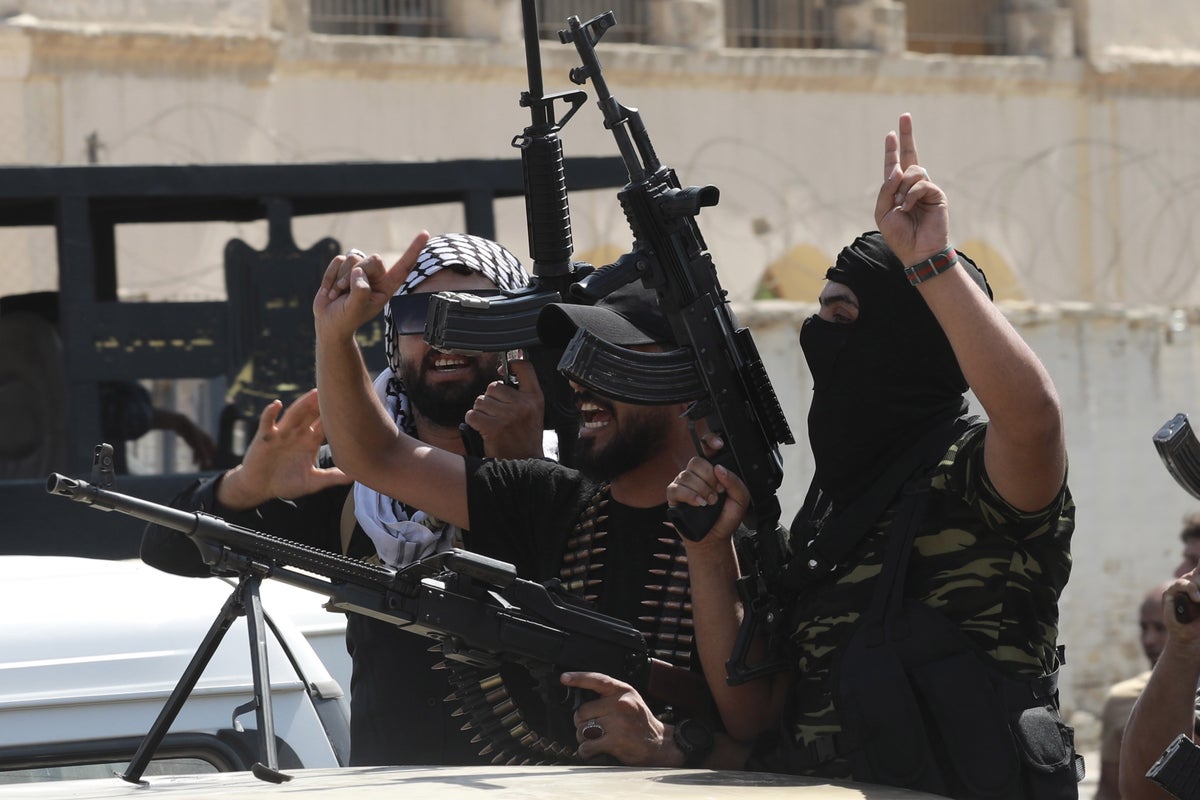
Calm was slowly restoring to the streets of Baghdad on Tuesday after armed supporters of powerful Iraqi cleric, Moqtada al-Sadr, began to withdraw from the streets.
Following two days of deadly unrest that sparked fears instability might spread throughout the country and even the region, al-Sadr, told his supporters to leave the government quarter where they had rallied.
Within minutes, some could be seen heeding the call, dismantling their tents and walking out of the area known as the Green Zone.The cleric’s supporters packed up their belongings and trucks ferried away bundled up mattresses.
Mounds of trash littered thoroughfares and the steps leading up to Iraq‘s parliament building.
A portrait of al-Sadr waving was placed against a tree as his followers rolled up carpets, tea glasses and the remnants of their four-week sit-in.Iraq’s military also announced the lifting of a nationwide curfew, further raising hopes that the immediate crisis was ebbing, though the larger political crisis remained unresolved.
Al-Sadr’s move to de-escalate tensions raised questions of how issues such as the dissolution of parliament and the holding of early elections will be handled between rival groups.
Iraq’s president on Tuesday said elections may be a way out of the crisis. The country’s government has been deadlocked since al-Sadr’s party won the largest share of seats in October parliamentary elections but not enough to secure a majority government.
That led to months of political infighting between al-Sadr’s Shiite followers and his Iran-backed Shiite rivals before it became violent Monday.The chaos began when al-Sadr announced he would resign from politics.
Many dismissed the move as a ploy to gain greater leverage.On Tuesday, his followers could be seen on live television firing both machine guns and rocket-propelled grenades into the heavily-fortified Green Zone, while security forces sporadically returned fire and armoured tanks lined up.
Some bystanders filmed the gunfight with their mobile phones, though most hid behind walls, wincing when rounds cracked nearby.
At least 30 people were killed, officials said, before al-Sadr urged those loyal to him to go home, following pleas for restraint from several Iraqi officials and the United Nations.
“This is not a revolution,” the cleric said in a televised address.
Al-Sadr, who spurred his followers to storm the parliament in July with calls for revolution and reform, apologised to the Iraqi people and said he could not support the violence.
In addition to the dozens killed, over 400 were wounded. In a sign of the fear that the unrest would spread, Iran closed its borders to Iraq earlier Tuesday, though even before al-Sadr’s order, streets beyond the capital’s government quarter largely remained calm.
Later on Tuesday, Iran resumed flights to Iraq, Iranian state TV reported.During the violence, Mr Sadr’s supporters used ropes to pull down cement barriers and breach the palace gates. Protesters rushed into the halls and salons of the palace, the site of meetings for key government heads and state dignitaries.
The military had announced a nationwide curfew, while Cabinet sessions were also suspended in response to the violence.
UN Secretary-General Antonio Guterres said he was following the developments in Iraq “with concern” and appealed for “calm and restraint”.
Additional reporting by agencies







